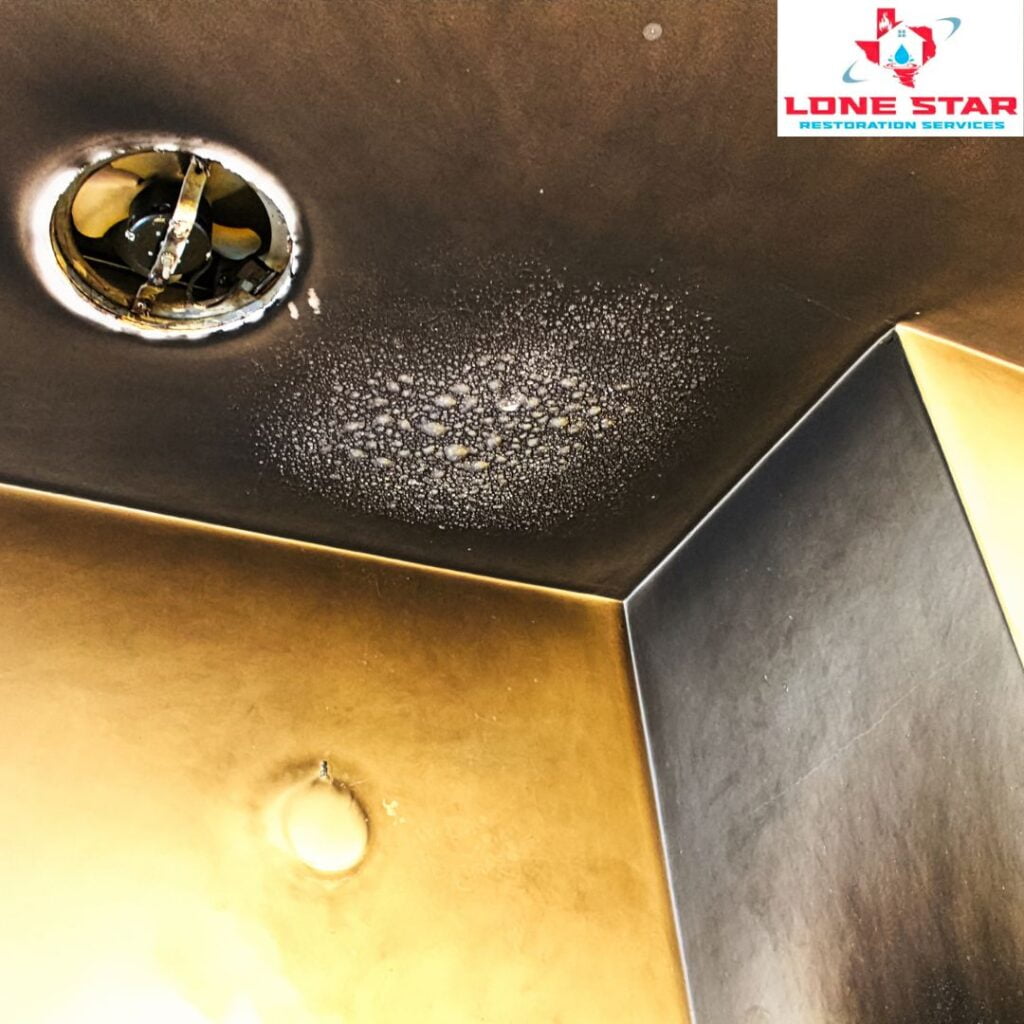Unveiling the Science Behind Restoring Smoke Damage
Fire incidents can be devastating, leaving behind not only charred structures but also a silent intruder that often goes unnoticed: smoke. The aftermath of a fire may reveal visible damage, but the science behind smoke damage restoration unveils a hidden world of complex challenges. Smoke is not just a simple byproduct of combustion; it’s a mixture of particles, gases, and chemicals that can penetrate even the tiniest crevices of your home or business. Understanding the science behind smoke damage is essential because it affects not only the aesthetics of your property but also the health and safety of its occupants.
In this blog, we’ll delve deep into the intricate composition of smoke, explore the immediate and long-term consequences of smoke damage, and shed light on the advanced techniques and equipment used by professionals to restore properties affected by smoke. By the time you finish reading, you’ll have a newfound appreciation for the meticulous science and expertise required for effective smoke damage restoration.
Understanding the Composition of Smoke
Smoke may appear as a mere cloud of haze, but beneath its seemingly innocuous exterior lies a complex and hazardous composition. To comprehend the science of smoke damage restoration fully, it’s crucial to delve into the intricate makeup of smoke and how it varies depending on the materials burned.
A. Smoke Particle Size and Composition
- Tiny Particles: Smoke consists of tiny solid and liquid particles that are suspended in the air. These particles can be as small as 0.01 micrometers, making them exceptionally difficult to remove entirely.
- Carbon-Based: The core components of smoke are carbon-based particles, which are produced during the incomplete combustion of organic materials. These particles contribute to the black sooty residue often associated with smoke damage.
B. Types of Smoke Damage
- Wet Smoke: Wet smoke results from slow-burning, low-heat fires, typically involving synthetic materials. It produces sticky, smeary residues that are challenging to clean.
- Dry Smoke: Dry smoke, on the other hand, results from high-temperature, fast-burning fires, usually fueled by natural materials like wood and paper. It creates a fine, powdery residue that spreads easily but can be less adhesive.
- Protein Residue: Cooking fires often produce protein residue, which is nearly invisible but carries a strong, unpleasant odor. It can adhere to surfaces and be challenging to remove without proper techniques.
Understanding the various types of smoke and their specific characteristics is fundamental to tailoring effective restoration strategies. Different types of smoke damage require distinct approaches, making it imperative for restoration professionals to identify the specific challenges they face in each case. This scientific understanding serves as the foundation for successful smoke damage restoration, ensuring that every unique scenario is addressed with precision and expertise.
The Immediate Impact of Smoke Damage
When a fire rages, the immediate destruction caused by flames is often visible, but the insidious effects of smoke damage can be equally, if not more, destructive. Understanding these immediate consequences is vital for appreciating the urgency of smoke damage restoration efforts.
A. Discoloration and Staining
Smoke leaves behind telltale signs of its presence, often manifesting as unsightly discoloration and staining on walls, ceilings, furniture, and personal belongings. The color of the residue can vary depending on the materials burned and the type of smoke produced. For instance, wet smoke tends to leave sticky, dark stains, while dry smoke leaves a finer, powdery residue.
B. Lingering Odors
One of the most noticeable immediate impacts of smoke damage is the persistent and often overpowering odor it imparts. These odors can permeate every corner of a space, and they’re notoriously challenging to eliminate with conventional air fresheners or cleaning products. The complex chemical composition of smoke, including volatile organic compounds (VOCs), contributes to the lingering, pungent smell.
C. Corrosion and Deterioration
Smoke also contains corrosive elements that can harm various surfaces and materials. Metals may tarnish, and electronic devices can suffer damage due to the acidic nature of smoke residue. Immediate action is essential to mitigate these corrosive effects and prevent further deterioration.
D. Health Concerns
Beyond the visible and olfactory consequences, smoke damage can pose immediate health risks. Inhaling or coming into contact with smoke residues can irritate the respiratory system, leading to coughing, wheezing, and other health issues. People with pre-existing respiratory conditions are especially vulnerable.
It’s critical to recognize that the longer smoke damage is left unaddressed, the more extensive and challenging the restoration process becomes. Promptly addressing these immediate effects is essential not only for restoring the appearance and functionality of your property but also for safeguarding the health and well-being of its occupants. In the subsequent sections of this blog, we will explore the scientific methods and advanced techniques used to mitigate these immediate impacts and restore properties affected by smoke damage.
The Role of HVAC Systems in Smoke Damage
While the visible signs of smoke damage are readily apparent, the role of HVAC (Heating, Ventilation, and Air Conditioning) systems in exacerbating the problem is often underestimated. Smoke can infiltrate these systems, making them both a carrier and distributor of smoke particles, which can significantly worsen the scope of damage and pose health risks to building occupants.
A. Smoke Infiltration into HVAC Systems
- Airborne Particles: Smoke contains tiny airborne particles that are drawn into HVAC systems through air intakes, ducts, and vents. Once inside, these particles can accumulate on surfaces and within the ductwork.
- Distribution Mechanism: The HVAC system’s circulation fans can disseminate smoke particles throughout a building, even to areas seemingly untouched by the fire itself. This can lead to widespread contamination.
B. Potential Consequences
- Cross-Contamination: The presence of smoke residues within HVAC systems can lead to cross-contamination of unaffected areas, making the restoration process more challenging and extensive.
- Health Risks: Smoke particles within HVAC systems can be circulated into the breathing air, posing health risks to occupants, particularly those with allergies, asthma, or respiratory sensitivities.
C. HVAC Cleaning and Restoration
To address smoke damage comprehensively, HVAC cleaning and restoration become imperative:
- Duct Cleaning: Thorough cleaning of the HVAC ductwork and components is necessary to remove smoke particles and prevent further distribution.
- Filter Replacement: Replacing HVAC filters is crucial, as they can trap a significant amount of smoke particles and may become clogged.
- Decontamination: Decontaminating and sanitizing the HVAC system can eliminate odors and ensure the air circulated is free from smoke residues.
Understanding the role of HVAC systems in smoke damage underscores the importance of holistic smoke damage restoration efforts. Ignoring these systems can lead to ongoing issues, even after the visible signs of smoke damage have been addressed.
Professional restoration teams are well-versed in tackling HVAC-related smoke damage, ensuring that both the immediate and long-term impacts are effectively mitigated. In the subsequent sections of this blog, we will delve into the scientific methods and advanced equipment used in smoke damage restoration to tackle these challenges comprehensively.
Restoration Techniques and Equipment
The science of smoke damage restoration involves a range of specialized techniques and advanced equipment to effectively remove smoke residues and restore properties to their pre-fire condition. These methods are crucial for addressing the diverse types of smoke damage and the complex composition of smoke.
A. Thermal Fogging
- How It Works: Thermal fogging is a technique that utilizes a specialized fogging machine to disperse a fine mist of deodorizing agents. These tiny particles penetrate the same areas that smoke did, effectively neutralizing odor-causing particles.
- Effectiveness: Thermal fogging is highly effective in eliminating smoke odors by chemically reacting with odor molecules and rendering them neutral.
B. Air Scrubbing
- How It Works: Air scrubbers are high-efficiency particulate air (HEPA) filtration devices that remove smoke particles and contaminants from the air. They pull in and filter the air, trapping even microscopic smoke particles.
- Effectiveness: Air scrubbers not only improve indoor air quality but also aid in the removal of airborne smoke residues, reducing the risk of health issues.
C. Ozone Treatment
- How It Works: Ozone generators release ozone, a molecule composed of three oxygen atoms, into the environment. Ozone reacts with and neutralizes smoke odors.
- Effectiveness: Ozone treatment is effective at eliminating stubborn odors, but it requires careful handling as ozone can be harmful in high concentrations and should be used in unoccupied spaces.
D. Surface Cleaning and Restoration
- Specialized Cleaning Agents: Restoration professionals use specialized cleaning agents tailored to the type of smoke damage (wet smoke, dry smoke, or protein residue) and the affected surfaces.
- Abrasive Techniques: For surfaces that can withstand it, abrasive cleaning techniques like dry-ice blasting or soda blasting may be used to remove stubborn smoke residues.
Health Implications of Smoke Damage
The health implications of smoke damage cannot be overstated. Inhaling or coming into contact with smoke residues can lead to various health issues:
- Respiratory Problems: Smoke particles can irritate the respiratory system, leading to coughing, wheezing, and exacerbating conditions like asthma and bronchitis.
- Allergies and Sensitivities: Individuals with allergies or sensitivities may experience heightened reactions when exposed to smoke residues.
- Long-Term Health Effects: Prolonged exposure to smoke residues can contribute to long-term health problems, making the complete removal of smoke damage essential.
The Role of Professionals in Smoke Damage Restoration
While some property owners may attempt to address smoke damage themselves, the intricate science behind smoke damage restoration demands the expertise of certified professionals. Restoration professionals possess the knowledge, training, and equipment required to:
- Thoroughly assess the extent of smoke damage.
- Employ the appropriate restoration techniques for the type of smoke damage.
- Safely and effectively remove smoke residues and odors.
- Mitigate health risks associated with smoke damage.
In conclusion, understanding the science of smoke damage restoration is essential for property owners facing the aftermath of a fire. The immediate and long-term impacts of smoke damage require a systematic approach that combines scientific knowledge with specialized techniques and equipment. By enlisting the services of qualified restoration professionals, property owners can ensure that their homes or businesses are restored to a safe and habitable condition, free from the lingering effects of smoke damage.
Conclusion
In the wake of a fire, the threat posed by smoke damage lingers, silently affecting both the structural integrity of your property and the well-being of its occupants. The science of smoke damage restoration, as explored in this blog, reveals the multifaceted nature of this challenge. Smoke, with its microscopic particles and noxious gases, can infiltrate every corner, making it an insidious adversary.
Understanding the composition of smoke, its immediate consequences, and the role of HVAC systems clarifies the urgency of swift and professional restoration. The techniques and equipment employed by experts, from thermal fogging to air scrubbing and ozone treatment, exemplify the precision and sophistication required to combat smoke damage effectively.
Moreover, the health implications of smoke damage underscore the critical need for thorough restoration, especially for vulnerable individuals. Respiratory issues, allergies, and long-term health effects are all potential consequences of incomplete restoration efforts.
Ultimately, the science of smoke damage restoration reinforces the indispensable role of certified professionals. Their knowledge, experience, and specialized tools are essential for not only eradicating visible signs of damage but also ensuring a safe and healthy environment for you and your loved ones.
By recognizing the intricacies of smoke damage and embracing a holistic restoration approach, property owners can reclaim their spaces, free from the lingering specter of smoke and its insidious effects. Trusting in the expertise of professionals ensures that your home or business can rise from the ashes, restored to its former glory.





